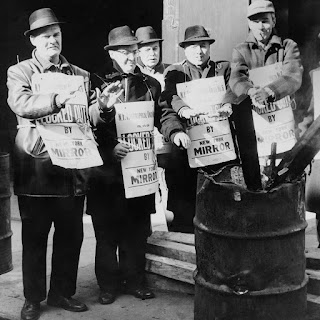Every day brings a new story. And each day contributes to the art of story telling -- in prose and poetry, in music, on the stage, on the screen, and, of course, in books.
Today is the story of December 8th.
_______________________________________________________________________________
It is the 342nd day of the year, leaving 23 days in 2021.
On this date in 1962, at 2 o'clock in the morning, Bert Powers, president of the International Typographers Union Local 6 in New York City, called for a strike against four daily newspapers -- The New York Times, the Daily News, the New York Journal-American, and the New York World-Telegram & Sun. Quickly, five other dailies -- the New York Mirror, the New York Herald-Tribune, The New York Post, the Long Island Star Jornal, and the Long Island Daily Press -- called for a lookout and shut down their presses.
It would last 114 days, and have major impacts in the journalistic world of story telling. For instance, due to the lack of published obituaries, attendance at funerals took a precipitous drop and flower shops saw sales decrease -- "A lot of people just don't know when their friends died," one florist told the weekly magazine, Newsweek
It helped bring television reporting into the mainstream of daily life. Residents of New York, which had no less than seven daily newspapers in 1962, saw that number drop to three a few years later. The culture of daily reporters consistently watching over politicians who made and supposedly enforced the rules slowly diminished as the power of newspapers shrank.
It helped change the culture of papers, ousting linotype operators in favor of computerized typesetting equipment. In the newsrooms of New York, it helped bring out a more literary style of reporting -- during the strike one group of reporters and editors began the New York Review of Books, which continues today. Among the reporters who stretched their writing talents during and after the strike were columnists and novelists such as Calvin Trillin, Gay Talese, Nora Ephron, Pete Hamill, Jimmy Breslin, and Tom Wolfe.
The strike began to end when Dorothy Schiff, then publisher of the Post, ended the lockout at that paper, which began publishing again on March 4, 1963. New York Mayor Robert Wagner and labor negotiator Theodore Kheel eventually brought together the publishers and the 10 unions on strike, and a settlement was reached on March 31.
The strike was off.


No comments:
Post a Comment